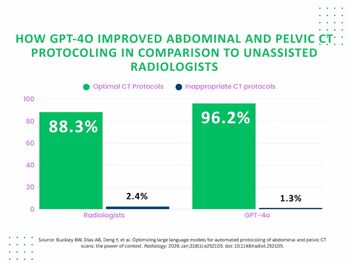
FDA Clears Siemens Software for Cerebral Blood Flow Assessment
Siemens Healthcare has received FDA 501(k) marketing clearance for a software package that helps in the assessment of cerebral blood flow during interventional procedures.
Siemens Healthcare has received FDA 501(k) marketing clearance for a software package that helps in the assessment of cerebral blood flow during interventional procedures.
The syngo Neuro PBV IR (Parenchymal Blood Volume Interventional Radiology) is intended to provide visual assistance in diagnosis and treatment of vessel malformations, such as aneurysms, arteriovenous malformations, and stenosis, the company said. The software displays a color-coded map of cerebral tissue in the angiography suite, which can help in the treatment of stroke patients.
Syngo Neuro PBV uses cone-beam computed tomography (CT) to produce a qualitative colorized image similar to CT perfusion, the company said. It is designed for the visualization of contrast-enhanced blood distribution in the arterial and venous vessels in the head using color-coded relative values for diagnosis.
Parenchymal blood volume information is acquired with two C-arm rotations around the patient and a steady-state contrast injection. The system then applies processing algorithms to generate a neurological PBV map, according to the company.
“Neurovascular imaging has evolved from simple anatomical 2D rendition of blood vessels to 3D spatial visualization and, with the Neuro PBV, to physiological functional imaging of the brain,” Michel E. Mawad, MD, Baylor College of Medicine, Houston, said in the company’s press release. “Neuro PBV is a promising technique that will add valuable information about the viability of the brain and should help guide the interventionalist in the decision-making process of revascularization procedures."
Newsletter
Stay at the forefront of radiology with the Diagnostic Imaging newsletter, delivering the latest news, clinical insights, and imaging advancements for today’s radiologists.




























